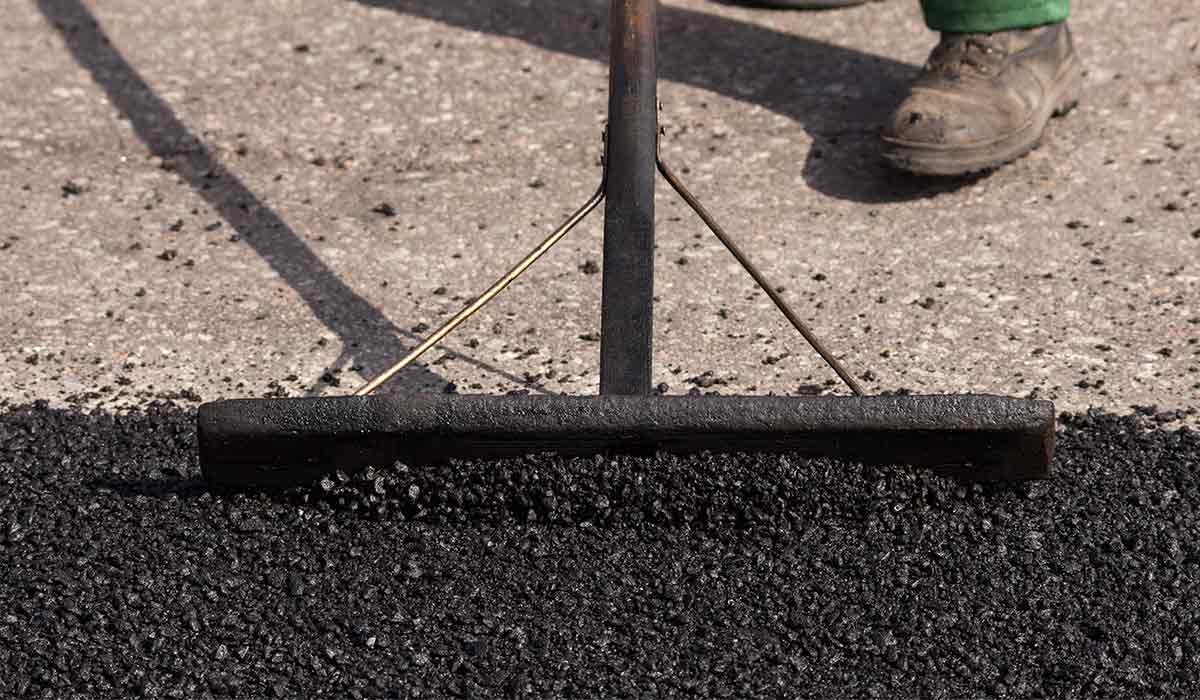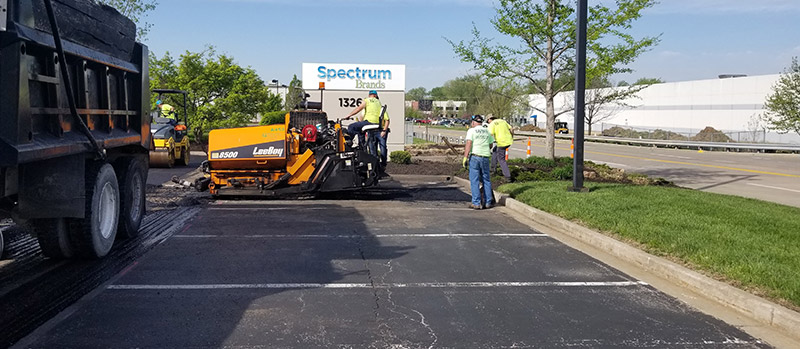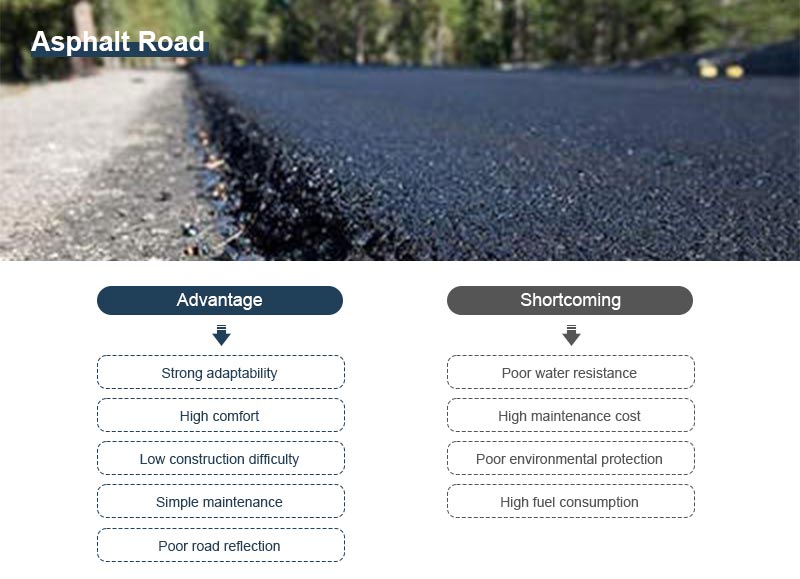The 15-Second Trick For A1 Professional Asphalt & Sealing Llc
The 15-Second Trick For A1 Professional Asphalt & Sealing Llc
Blog Article
Some Ideas on A1 Professional Asphalt & Sealing Llc You Should Know
Table of ContentsHow A1 Professional Asphalt & Sealing Llc can Save You Time, Stress, and Money.A1 Professional Asphalt & Sealing Llc - The FactsSome Known Factual Statements About A1 Professional Asphalt & Sealing Llc Things about A1 Professional Asphalt & Sealing LlcThe 6-Minute Rule for A1 Professional Asphalt & Sealing Llc

The oil in a vehicle engine is not simply oil. It includes a selection of additives to boost the automobile's performance. These consist of polymers, thickness modifiers, heat stabilizers, extra lubricants, and wear additives. The REOB includes all the ingredients that were in the waste oil along with the wear metals from the engine (mostly iron and copper).
By making many blends utilizing various REOB examples and various asphalt binders, the variations greatly can be averaged out. Numerous States offered samples of recognized REOB make-up to TFHRC researchers, who evaluated the examples to contrast the percent of included (recognized) REOB to the discovered (examined) quantity. The analyses revealed a comparable portion of included and found REOB.
A Biased View of A1 Professional Asphalt & Sealing Llc
They received an overwhelming action. The TFHRC scientists evaluated 1,532 samples from 40 States, one Canadian province, and two Government Lands Highway departments. They examined each example twiceamounting to more than 3,000 evaluations. None of those States recognized that the asphalt they were purchasing contained REOB. One State urged its samples had no REOB.
Of the 1,532 examples checked, 12 percent included REOB, and some contained appreciably high degrees of it at 1020 percent. The highest possible level was 34 percent in a sample from Texas, which TxDOT had used in a patching substance. This screening likewise revealed the visibility of phosphoric acid in 11 percent of the samples, and 2 percent contained ground tire rubber.
Two years ago at TRB's yearly meeting, the Federal researchers held an REOB workshop and offered the findings of their research laboratory analyses to a standing room-only crowd. Although some agencies do not especially prohibit REOB, they do enforce physical tests that preclude its useeffectively a ban. what is cold asphalt?. Others do not prohibit it by specification, however have arrangements with asphalt vendors to avoid making use of REOB
All About A1 Professional Asphalt & Sealing Llc
A handful do enable REOB, some within particular limits. For instance, Ohio and Texas limitation degrees to much less than 5 percent of the asphalt. To create a trusted examination method that all States can use, the TFHRC researchers set up a round-robin test plan. The participants are 11 State highway companies (Illinois, Massachusetts, Minnesota, Mississippi, Montana, North Carolina, Oklahoma, South Carolina, Texas, Vermont, and Wyoming), 2 independent testing labs, the Ministry of Transport in Ontario, Queen's University in Ontario, and an Ontario paving specialist.
In total amount, the scientists prepared and shipped 720 blends. The participants are evaluating the samples independently utilizing the guidelines given by the TFHRC scientists. The round-robin screening is almost finished, and TFHRC is in the process of collecting the results. The output will certainly be a recommended AASHTO examination approach that any type of State can adopt and make use of (asphalt sealcoating in st louis).
The sidewalk with REOB, which is located 0.6 mile (1 kilometer) from the sidewalk without REOB, has similar subgrade, traffic thickness, and environment. Nonetheless, the section of Highway655 with 5 to 10 percent REOB revealed significant breaking. In this instance, the presence of REOB was the recognized reason of breaking at a reduced temperatures.
"In our experience in copyright, also little quantities of 23 percent can be a trouble." A section of test pavement in Minnesota (MN1-4) found to consist of REOB also split prematurely. The pavement done well for the first 3 to 4 years, however after that began to break. This sidewalk is additionally subject to low temperature levels.
Not known Facts About A1 Professional Asphalt & Sealing Llc
The tests were not comprehensive, but they showed that at levels of 6 percent or even more, the tensile toughness of the asphalt went down substantially. At a level of 3.5 percent REOB, the variation in the physical examination approaches was better than the result of REOB. click here for more info As a matter of fact, it was hard for scientists to analyze whether REOB was existing.

One binder parameter thought about is the difference between the reduced temperature level critical requirements temperature level for rigidity (S) in the flexing light beam rheometer and the flexing light beam rheometer creep slope (m-value) kept in mind as Tcritical. TC = TC (S) TC (m-value). Analysis of this parameter is still ongoing. 2 independent study groups, one from AASHTO and the various other from the Asphalt Institute, wrapped up that more study is required on making use of REOB in asphalt.
Formerly, all asphalt testing gauged engineering properties such as rigidity. These examinations do not reveal what materials had actually been contributed to the asphalt. One example received during the TFHRC research study had an extremely odd evaluation. The example had the adhering to test outcomes: Superpave PG 64-28 with a high temperature quality of 67.3 Tcritical on the flexing light beam rheometer was 6.7 levels Celsius.

7 Simple Techniques For A1 Professional Asphalt & Sealing Llc
These outcomes demonstrate there are weaknesses in the standardized design screening procedures that may be made use of. The producer may have a financial advantage and the item passes all the standardized tests, yet the item may not be helpful to making sure long-lasting performance. To resolve this problem and the expansion of new asphalt ingredients and extenders, TFHRC is beginning a study program to utilize handheld spectroscopic devices, x-ray fluorescence spectroscopy, and Fourier transform infrared spectroscopy to enable analyses to be done in the field instead than having to take examples back to the laboratory.
Report this page